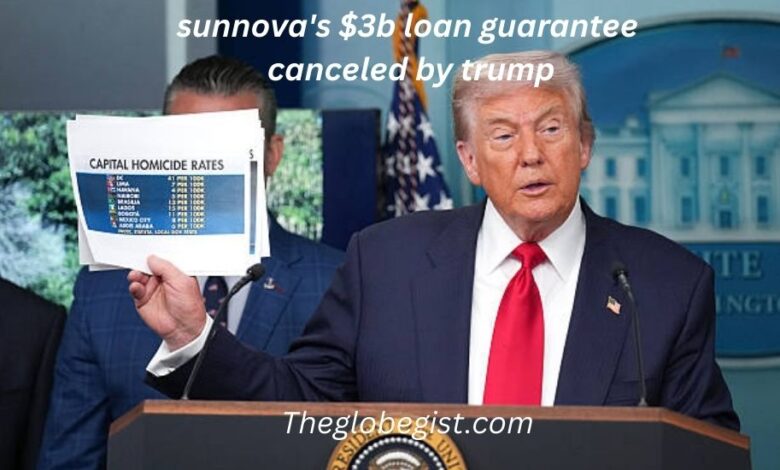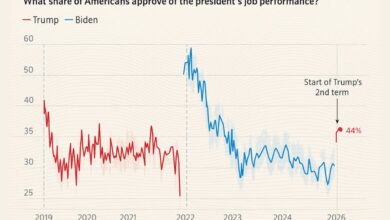Sunnova’s $3B Loan Guarantee Canceled by Trump Administration: What It Means

In one of the most consequential moves in recent renewable energy policy, the Trump administration has canceled a $3 billion loan guarantee for Sunnova Energy, one of the largest U.S. residential solar companies. The Department of Energy (DOE) “de-obligated” the funding, effectively ending what was once celebrated as a historic financing deal for low-income solar adoption under the Biden administration. This cancellation not only reshapes Sunnova’s financial future but also signals a wider shift in the trajectory of federal support for renewable energy projects.
The story of Sunnova’s loan guarantee—its promise, its reversal, and its implications—provides a deep insight into the intersection of politics, economics, and the clean energy transition.
Background of Sunnova Energy
Founded in 2012 and headquartered in Houston, Texas, Sunnova Energy rose to prominence by offering solar panel installations, battery storage systems, and energy services across the United States and its territories. The company positioned itself as a champion of decentralized clean energy, making rooftop solar accessible to households that could not afford large upfront costs.
Over the years, Sunnova expanded rapidly, fueled by growing environmental awareness, favorable state incentives, and increasing federal support for renewable energy. The company’s business model relied heavily on financing structures, including government-backed loan guarantees, to help customers transition to solar energy with little or no upfront payment.
The $3 Billion Loan Guarantee – A Landmark Deal
In April 2023, under the Biden administration, the DOE announced Project Hestia—a landmark $2.92 billion partial loan guarantee to Sunnova. The initiative aimed to finance up to 100,000 rooftop solar and battery storage systems for low-income and underserved communities. It was the largest federal financing commitment to a residential solar company in U.S. history.
The deal was hailed as a major step in accelerating clean energy adoption, reducing greenhouse gas emissions, and lowering utility bills for economically disadvantaged households. Sunnova planned to leverage the guarantee to issue bonds at favorable interest rates, allowing the company to scale installations across multiple states.
The Sudden Cancellation
On May 28, 2025, the Trump administration announced the cancellation of the loan guarantee. Officially, the DOE confirmed that the funds had been “de-obligated” after Sunnova notified the agency that it no longer intended to utilize the facility. Although the company initiated the cancellation, the political context surrounding it cannot be ignored.
Many policy analysts see the move as part of a broader shift away from federal backing of large-scale renewable energy financing. The reversal marked a sharp departure from the Biden administration’s clean energy agenda and raised questions about the stability of government support for the solar industry.
Financial Struggles Behind the Decision
While politics played a role, Sunnova’s financial troubles were a decisive factor in the loan guarantee’s termination. By early 2025, the company faced:
-
Rising interest rates that increased borrowing costs.
-
Reduced state incentives in key solar markets like California.
-
Slowing customer growth due to economic uncertainty and changing energy policies.
-
Mounting debt—with liabilities reported between $10 billion and $50 billion.
Although Sunnova had already issued $371 million in bonds backed by the guarantee, these were not directly tied to its ongoing debt restructuring. The company’s leadership determined it was no longer feasible to proceed with the full financing plan.
Layoffs, Bankruptcy, and Industry Shockwaves
The cancellation came just days before a major restructuring announcement. On June 5, 2025, Sunnova laid off 718 employees—about 55% of its workforce—and filed for Chapter 11 bankruptcy through its subsidiary, Sunnova TEP Developer. Four days later, on June 9, the parent company also sought bankruptcy protection.
The bankruptcy filings revealed Sunnova had only around $13 million in cash—a staggering figure for a company that once commanded billions in federal commitments. For the residential solar industry, this was a seismic event, sending shockwaves through investors, suppliers, and policymakers.
Political Context and Policy Reversals
The cancellation of Sunnova’s loan guarantee illustrates how vulnerable renewable energy projects can be to political shifts. Under the Biden administration, clean energy financing was a central pillar of federal climate policy, backed by the Inflation Reduction Act and DOE loan programs.
The Trump administration, however, has signaled skepticism toward government-backed clean energy financing, drawing comparisons to the failed Solyndra loan program of the Obama era. While supporters of the cancellation argue it protects taxpayers from potential losses, critics warn that abrupt policy reversals undermine investor confidence in the clean energy sector.
The Broader Renewable Energy Landscape
Sunnova’s collapse raises questions about the long-term viability of residential solar companies dependent on federal incentives. The residential solar market faces unique challenges, including:
-
High customer acquisition costs compared to utility-scale solar.
-
Long-term service obligations that strain cash flow.
-
Policy instability that makes long-term planning difficult.
-
Competition from utilities offering renewable energy packages without rooftop installations.
Despite these hurdles, renewable energy remains a growing sector globally. Utility-scale solar and battery storage projects continue to attract investment, though residential solar may require new financing models to ensure resilience.
Consumer Impact
For customers, Sunnova’s bankruptcy and the loan guarantee’s cancellation create uncertainty over warranty and service agreements. While the company has stated that it intends to honor existing contracts during bankruptcy proceedings, the long-term stability of those commitments remains unclear.
Low-income households that were supposed to benefit from Project Hestia will now have fewer financing options for rooftop solar. This setback may slow clean energy adoption in the very communities the program was designed to help.
Industry Reactions
-
Supporters of the Cancellation: The Institute for Energy Research praised the move, arguing that it prevented a potential taxpayer-funded bailout and likening Sunnova’s trajectory to past renewable failures.
-
Critics of the Cancellation: Clean energy advocates contend that the decision undermines U.S. climate goals and erodes trust in federal clean energy programs. They emphasize that abrupt changes make it harder for companies to plan large-scale, long-term projects.
Lessons Learned
The Sunnova case underscores several key lessons for policymakers and industry leaders:
-
Political Risk Must Be Managed – Companies reliant on government support need strategies to weather policy changes.
-
Financial Health Is Crucial – Even with government backing, poor financial performance can derail major projects.
-
Diversification of Funding Sources – Overdependence on federal programs can create vulnerability.
-
Clear Communication With Stakeholders – Sudden shifts can be mitigated if companies proactively inform investors, customers, and regulators.
Conclusion
The cancellation of Sunnova’s $3 billion loan guarantee by the Trump administration is more than a corporate setback—it is a case study in how politics, economics, and energy policy intersect. While the move may shield taxpayers from potential losses, it also disrupts thousands of planned solar installations and sends a warning to other renewable energy companies.
As the U.S. navigates its energy future, the Sunnova episode will be remembered as a pivotal moment highlighting both the promise and peril of government-backed clean energy financing. Whether this marks the start of a broader retreat from federal renewable energy commitments or simply a cautionary tale remains to be seen.
In the coming years, stakeholders in the energy sector will closely watch how companies adapt to a more uncertain policy landscape. For those seeking a deeper understanding of these shifts and their implications, The Globe Gist, continues to explore the most important developments shaping the world’s economic and environmental future.
Thanks for read our article if ou want more like this kind of article visit our sie The Globe Gist, and comment us.



